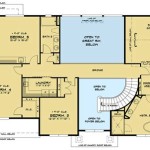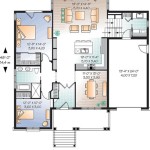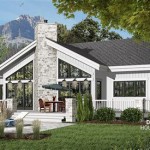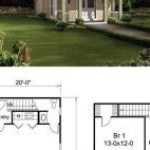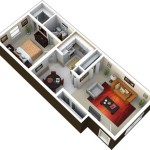Creating a house plan is the process of developing a detailed blueprint for the construction of a new home. This plan serves as a roadmap for the entire building process, outlining the layout, dimensions, and specifications of the house. A well-crafted house plan ensures that the home meets the specific needs and preferences of its occupants while adhering to building codes and regulations.
House plans can vary greatly in terms of complexity and detail. Some plans may simply include a basic layout of the rooms and their dimensions, while others may provide detailed specifications for every aspect of the house, from the type of flooring to the placement of electrical outlets. The level of detail required in a house plan will depend on the specific building requirements and the preferences of the homeowner.
In the following sections, we will explore the key elements of creating a house plan, including the different types of plans available, the factors to consider when designing a plan, and the steps involved in the planning process.
Creating a house plan involves several important considerations. Here are ten key points to keep in mind:
- Define your needs and preferences
- Research different house plans
- Consider your budget
- Choose the right architect or designer
- Get permits and approvals
- Review the plan carefully
- Make revisions as needed
- Finalize the plan
- Build your dream home
- Enjoy your new home
By following these steps and considering these key points, you can create a house plan that meets your specific needs and creates the home of your dreams.
Define your needs and preferences
The first step in creating a house plan is to define your needs and preferences. This involves carefully considering how you want to live in your home and what features are important to you. Some key questions to ask yourself include:
- How many bedrooms and bathrooms do you need?
- What is your ideal kitchen layout?
- Do you want a formal dining room or a more casual eating area?
- Do you need a home office or a dedicated space for hobbies?
- Do you want indoor-outdoor living spaces, such as a patio or deck?
- What is your preferred architectural style?
- What are your energy efficiency goals?
- What is your budget?
Once you have a good understanding of your needs and preferences, you can start to develop a house plan that meets your specific requirements. It is important to be realistic about your needs and to prioritize the features that are most important to you. Keep in mind that you can always make changes to the plan as needed, but it is best to start with a solid foundation.
In addition to your own needs and preferences, it is also important to consider the needs of your family and any other people who will be living in the home. If you have children, for example, you may want to include a playroom or a dedicated study space. If you have elderly parents or other family members living with you, you may want to consider features such as a first-floor bedroom and bathroom.
Once you have carefully considered your needs and preferences, you can begin to develop a house plan that meets your specific requirements. The next step is to research different house plans to get ideas and inspiration.
Research different house plans
Once you have a good understanding of your needs and preferences, the next step is to research different house plans to get ideas and inspiration. There are many different ways to find house plans, including:
- Online house plan websites: There are many websites that offer a wide variety of house plans for sale. These websites typically allow you to search for plans by style, size, number of bedrooms and bathrooms, and other criteria.
- Home builders: Many home builders offer a selection of house plans to choose from. These plans are typically designed to be built by the builder, but you may be able to purchase the plans and have them built by a different contractor.
- Magazines and books: Home and design magazines and books often feature house plans. These plans are typically more stylized than plans from home builders, but they can be a good source of inspiration.
- Architects: Architects can design custom house plans that meet your specific needs and preferences. This is typically the most expensive option, but it allows you to create a truly unique home.
Once you have found a few house plans that you like, take some time to study them carefully. Consider the layout, the flow of space, and the overall design. Make note of any features that you particularly like or dislike. You may also want to make sketches or create a scrapbook of your favorite ideas.
As you research different house plans, it is important to keep your budget in mind. The cost of building a home will vary depending on the size, complexity, and location of the home. It is important to choose a plan that fits within your budget. You should also consider the cost of land, permits, and other expenses.
Once you have researched different house plans and have a good understanding of your needs and preferences, you can begin to develop a house plan that meets your specific requirements. The next step is to choose the right architect or designer.
Consider your budget
One of the most important factors to consider when creating a house plan is your budget. The cost of building a home can vary significantly depending on the size, complexity, and location of the home. It is important to choose a plan that fits within your budget. You should also consider the cost of land, permits, and other expenses.
There are a number of ways to save money on the cost of building a home. One way is to choose a smaller home. Another way is to choose a simpler design. You can also save money by using less expensive materials. However, it is important to keep in mind that cutting corners on construction can lead to problems down the road.
It is important to work with a qualified contractor to get an accurate estimate of the cost of building your home. The contractor will be able to take into account the cost of materials, labor, and permits. They will also be able to help you choose a plan that fits within your budget.
If you are having trouble affording the cost of building a new home, there are a number of government programs that can help. These programs can provide financial assistance to low-income families and first-time homebuyers.
Here are some additional tips for saving money on the cost of building a home:
* **Get multiple bids from contractors.** This will help you ensure that you are getting the best possible price.* **Consider using recycled materials.** This can save you money on the cost of materials.* **Do some of the work yourself.** This can save you money on the cost of labor.* **Take advantage of government programs.** There are a number of government programs that can help you save money on the cost of building a home.
Choose the right architect or designer
Choosing the right architect or designer is an important step in the process of creating a house plan. A qualified architect or designer can help you develop a plan that meets your specific needs and preferences. They can also help you stay within your budget and ensure that your home is built to code.
- Experience and expertise
When choosing an architect or designer, it is important to consider their experience and expertise. Make sure that they have experience in designing homes similar to the one you want to build. You should also ask about their experience with the local building codes and regulations.
- Communication skills
It is important to choose an architect or designer who is able to communicate effectively. You need to be able to clearly express your needs and preferences, and the architect or designer needs to be able to understand your vision and translate it into a workable plan.
- Fees
The fees charged by architects and designers can vary significantly. It is important to get a clear understanding of the fees involved before hiring an architect or designer. You should also ask about their payment schedule and any additional costs that may be involved.
- References
One of the best ways to find a qualified architect or designer is to ask for referrals from friends, family, or other professionals. You can also check online reviews to see what other people have said about their experiences with different architects and designers.
Once you have chosen an architect or designer, you can begin to develop a house plan that meets your specific needs and preferences. The next step is to get permits and approvals.
Get permits and approvals
Once you have developed a house plan, you will need to obtain permits and approvals from the local building department. The building department will review your plan to ensure that it meets all of the applicable building codes and regulations. They will also issue you a building permit, which is required before you can start construction.
The specific requirements for obtaining a building permit will vary depending on the location of your home. However, there are some general steps that you can follow:
- Submit your plans to the building department. You will need to submit a complete set of plans, including the floor plan, elevations, and sections. You may also need to submit a site plan and a soil report.
- Pay the required fees. The building department will charge a fee for reviewing your plans and issuing a building permit.
- Wait for the building department to review your plans. The building department will typically take several weeks to review your plans. They may request additional information or revisions to your plans.
- Obtain a building permit. Once the building department has approved your plans, they will issue you a building permit. The building permit will allow you to start construction.
In addition to a building permit, you may also need to obtain other permits and approvals, such as:
- Plumbing permit
- Electrical permit
- HVAC permit
- Zoning permit
The specific permits and approvals that you need will vary depending on the location of your home and the scope of your project.
Once you have obtained all of the necessary permits and approvals, you can begin construction on your new home. It is important to follow all of the building codes and regulations to ensure that your home is safe and habitable.
Review the plan carefully
Once you have a complete house plan, it is important to review it carefully before starting construction. This will help you identify any errors or omissions in the plan. It will also give you a chance to make any changes that you want to the design.
- Check the overall layout. Make sure that the layout of the house flows well and that all of the rooms are the right size and shape. You should also check the location of the windows and doors to make sure that they provide adequate light and ventilation.
- Review the structural details. Make sure that the foundation, walls, and roof are designed to meet the building codes in your area. You should also check the plans for any special structural features, such as a fireplace or a vaulted ceiling.
- Examine the mechanical systems. Make sure that the plans include all of the necessary mechanical systems, such as heating, cooling, plumbing, and electrical. You should also check the plans to make sure that the systems are properly sized and located.
- Consider the finishes. Make sure that the plans include all of the finishes that you want in your home, such as flooring, countertops, and paint colors. You should also check the plans to make sure that the finishes are compatible with the overall design of the house.
Once you have reviewed the plan carefully, you can make any necessary changes. You may want to make changes to the layout, the structural details, the mechanical systems, or the finishes. Once you are satisfied with the plan, you can start construction on your new home.
Make revisions as needed
Once you have reviewed the house plan carefully, you may need to make some revisions. This is a normal part of the planning process. There are a number of reasons why you may need to make revisions, such as:
- Changes to your needs or preferences. As you review the plan, you may realize that there are some changes that you want to make to the layout, the structural details, the mechanical systems, or the finishes. These changes may be based on your changing needs or preferences, or they may be based on feedback from your contractor or other professionals.
- Errors or omissions in the plan. Even the most carefully prepared house plans can contain errors or omissions. These errors may be minor, such as a missing window or door, or they may be more serious, such as a structural flaw. It is important to identify and correct any errors or omissions before starting construction.
- Changes to building codes or regulations. Building codes and regulations are constantly changing. It is important to make sure that your house plan complies with the latest codes and regulations. If there have been any changes to the codes or regulations since the plan was created, you will need to make revisions to the plan to ensure that it is compliant.
- Changes to the site conditions. The site conditions may change after the plan was created. For example, there may be a change in the soil conditions or the topography of the land. These changes may require you to make revisions to the plan to ensure that the house is properly sited.
Once you have identified the changes that need to be made, you can work with your architect or designer to revise the plan. It is important to make sure that all of the changes are properly documented and that the revised plan is approved by the building department before starting construction.
Finalize the plan
Once you have made all of the necessary revisions to the house plan, you can finalize the plan. This involves checking the plan for completeness, accuracy, and compliance with building codes and regulations. You should also make sure that the plan is properly documented and that all of the changes are clearly indicated.
- Check the plan for completeness. Make sure that the plan includes all of the necessary drawings and specifications. This includes the floor plan, elevations, sections, and details. You should also make sure that the plan includes all of the necessary information about the materials and finishes that will be used in the construction of the house.
- Check the plan for accuracy. Make sure that all of the dimensions and details in the plan are accurate. You should also check the plan for any errors or omissions. If you find any errors or omissions, you should correct them before finalizing the plan.
- Check the plan for compliance with building codes and regulations. Make sure that the plan complies with all of the applicable building codes and regulations. You should check the plan with the local building department to make sure that it is compliant. If the plan is not compliant, you will need to make changes to the plan before starting construction.
- Document the plan. Make sure that the plan is properly documented. This includes maintaining a record of all of the changes that have been made to the plan. You should also keep a copy of the final plan on file.
Once you have finalized the plan, you can start construction on your new home. It is important to follow the plan carefully and to make sure that all of the work is done to code. This will help to ensure that your home is safe and habitable.
Build your dream home
Once you have finalized the house plan, you can start construction on your dream home. This is an exciting and rewarding process, but it is also important to be prepared. Here are a few things to keep in mind:
- Get the necessary permits. Before you can start construction, you will need to obtain a building permit from the local building department. The building permit will allow you to start construction and ensure that your home is built to code.
- Hire a qualified contractor. It is important to hire a qualified contractor to build your home. A qualified contractor will have the experience and expertise to build your home safely and efficiently.
- Follow the plan carefully. It is important to follow the house plan carefully during construction. This will help to ensure that your home is built to your specifications and that it meets all of the applicable building codes and regulations.
- Make regular inspections. It is important to make regular inspections of the construction site to ensure that the work is being done to code and that there are no problems. You should also inspect the work of any subcontractors that you hire.
Building a home is a complex and challenging process, but it can also be a very rewarding experience. By following these tips, you can help to ensure that your dream home is built safely, efficiently, and to your specifications.
Enjoy your new home
Once your new home is complete, it is time to enjoy the fruits of your labor. This is a time to relax and savor the moment. It is also a time to reflect on the journey that you have taken to get to this point.
Building a home is a major undertaking. It requires a lot of time, effort, and money. But it is also an incredibly rewarding experience. When you finally move into your new home, you will have a sense of accomplishment that is unlike anything else. You will also have a place that you can truly call your own.
Your new home is a place where you can create memories that will last a lifetime. It is a place where you can raise a family, entertain friends, and simply relax and enjoy life. It is a place that is uniquely yours.
As you enjoy your new home, take some time to appreciate the details. Notice the way the light filters through the windows, the way the colors flow together, and the way the space feels. These are all things that you helped to create, and they are all part of what makes your home special.
Your new home is a reflection of you and your family. It is a place where you can be yourself and where you can create a life that is truly yours. Enjoy your new home!









Related Posts

